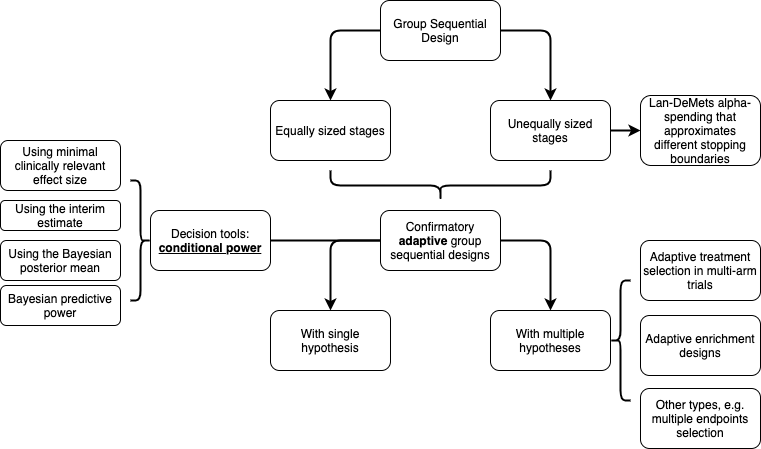[book] Group Sequential and Confirmatory Adaptive Designs in Clinical Trials#
A study note of [Wassmer and Brannath, 2016]

Chapter 2 Procedures with equally sized stages#
General notes for this chapter (and from other materials) and Chapter 3 can be found here.
Chapter 3 Procedures with unequally sized stages#
Critical values when the interims are performed at different sizes of smaples can be different than that is done at equal sizes
Boundaries originally developed from equally sized IAs are not accurate anymore thus adjustment is needed
The study protocol might contain a schedule of inspection times for the interim analyses during the course of the trial. In this case, the group sizes are unpredictable and the test procedure that is based on the worst case adjusted critical values can be used. An alternative, more sophisticated procedure that is based on the specification of an \(\alpha\)-spending function.
3.3 The \(\alpha\)-spending function approach#
The conceptual design of the \(\alpha\)-spending function approach is to provide a test procedure that enables interim analyses at arbitrary time points of analyses. Specifically, this approach can be used if the interim analyses are not scheduled at the observation of a specific number of observations but at fixed calendar times.
The \(\alpha\)-spending function approximates the classical group sequential boundaries also for the case of unequally spaced stages.
Chapter 4 Confidence intervals, p-values, and point estimation#
What problem this chapter tries to solve? Didn’t quite get it.
Chapter 5 Applications#
5.1 Normal responses#
5.2 Binary responses#
5.3 Survival data#
Sample size calcuation for survival outcome can be found here.
